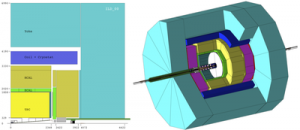The International Large Detector (ILD) is one of two detector concepts which are under study for the International Linear Collider. ILD started about ten years ago with the merger of two different concept groups. The concept group developed a detector design which was documented in the ILC’s Technical Design Report TDR. Over the past few months ILD has given itself a new structure, to address the future challenges of the ILC project.
ILD is not only large in size, but also has many members: by now 71 groups from around the world have signed up to ILD. The new structure rests on two main pillars: The institute assembly chaired by Jan Timmermans (NIKHEF, deputy Tohru Takeshita, Shinshu) and the executive team (ET) with the spokesperson Ties Behnke (DESY, deputy Kiyotomo Kawagoe, Kyushu). Each institute has one vote in the institute assembly, which is the final decision body in ILD. The executive team is responsible for the operational side of the concept. Within the ILD three working groups exist. These are the physics group under the leadership of Keisuke Fujii (KEK, deputy Jenny List, DESY), the Software and reconstruction group coordinated by Frank Gaede (DESY, deputy Akiya Miyamoto, KEK), and the technical group led by Claude Vallée (CPPM Marseille, deputy Karsten Büßer, DESY). The executive team is supplemented by four additional members elected by the institute assembly: Henri Videau (LLR), Alberto Ruiz (Santander), Yasuhiro Sugimoto (KEK) and Graham Wilson (Kansas).
With this re-organisation ILD has prepared itself to answer to the challenges to push for and to realise an ambitious project like the ILC in Japan. The immediate goal is to re-define ILD, optimised for cost and performance, and incorporate the latest advances in technologies and tools. ILD is doing this in close cooperation with detector R&D groups like CALICE or LC-TPC. Ultimately though the goal of ILD is to support the drive for the ILC as much as possible, and help to make ILC a reality.


Recent Comments